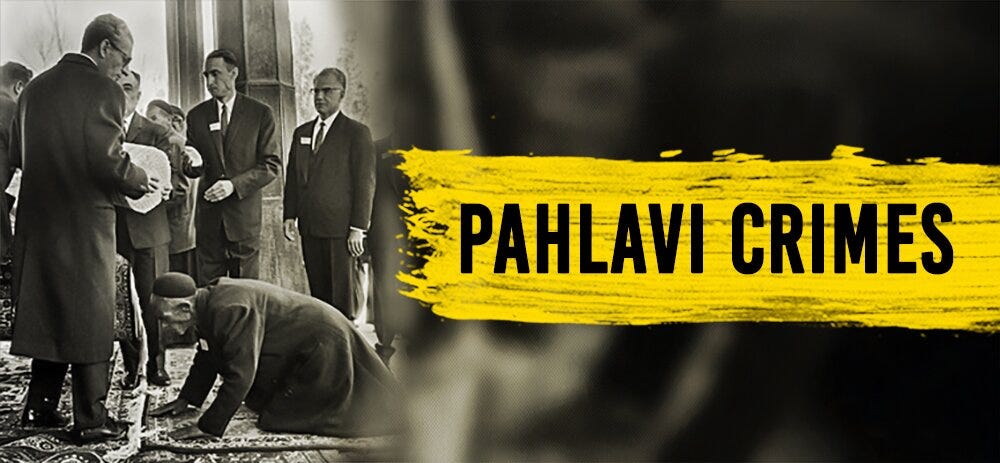The Pahlavi Regime: A Chronicle of Crimes and Dependence
How Foreign Domination, Corruption, and Repression Shaped Modern Iranian History
1. Total Dependence on Foreign Powers
The Pahlavi dynasty, especially under Mohammad Reza Shah, was marked by a humiliating reliance on Western powers, particularly the United States and Britain. Despite private frustrations, the Shah consistently obeyed foreign ambassadors and followed their commands, making Iran’s sovereignty a facade. Even the appointment and dismissal of prime ministers required American approval, and the regime’s policies—from oil production to foreign relations—were dictated by the West.
2. Brutal Suppression and Massacres
The regime’s response to dissent was violent. Notably, on the orders of U.S. General Robert Huyser, the Shah’s army was instructed to fire directly at protestors, resulting in massacres like those in Enqelab Square. Such brutality was not isolated; the regime routinely used force to crush opposition, with American officials encouraging continued violence to maintain control.
3. SAVAK: The Engine of Fear
The infamous SAVAK intelligence agency, created with help from the CIA and Mossad, became a symbol of terror. It used torture, extreme measures, and psychological pressure to silence critics and activists. Prisons were notorious for their cruelty, and the regime’s power was maintained through fear and oppression, all with the knowledge and support of Western allies.
4. Systematic Exclusion of the People
Elections under the Pahlavis were a sham. The regime handpicked candidates, and the public had no real role in governance. Political awareness was stifled, and the government operated in isolation from the people, who were kept passive and powerless.
5. Rampant Corruption and Decadence
Corruption permeated every level of the regime, from sexual scandals among the royal family to massive financial embezzlement. The Shah and his inner circle enriched themselves while the population suffered. Even drug trafficking scandals involving royal family members were quickly covered up.
6. Neglect of National Interests
For 55 years, the Pahlavi dictatorship ignored the nation’s dignity and interests, focusing instead on personal gain and the demands of foreign powers. The regime’s policies led to the neglect of national resources, with wealth concentrated among the elite and many regions left deprived.
7. Cultural and Educational Manipulation
The foundation of Iran’s universities under the Pahlavis was based on Western models, with little regard for Iranian values or ethics. The goal was to create a generation that thought and acted like Westerners, furthering foreign influence over Iranian society.
8. Legal Immunity for Foreigners
The regime granted “capitulation” to American agents, giving them immunity from Iranian law. This legal surrender highlighted the depth of Iran’s subservience, as thousands of foreign agents operated above the law within the country.
9. Economic and Social Injustice
National resources were monopolised by the Shah’s court and affiliates, while ordinary Iranians faced deprivation. Infrastructure projects, like railways, were designed to serve foreign interests rather than national development.
10. Destruction of National Identity and Values
The Pahlavis aggressively promoted Westernisation, banning hijab, changing traditional clothing, and erasing cultural markers. This campaign extended to language and education, with some officials even advocating for the replacement of the Persian script with a European one.
11. Discrimination and Ethnic Alienation
The regime alienated ethnic minorities, such as Kurds, Baluchis, Azeris, Arabs, and Turkmen, treating them as outsiders and neglecting their regions in terms of development and education.
12. Propaganda of Inferiority
A key propaganda theme was the supposed inferiority of Iranian products and capabilities, fostering a culture of dependence and self-doubt among the population.
13. Iran as a Code playground for Foreign Powers
Iran became a stronghold for Israel and a base for American military and intelligence operations. The regime’s close alliance with the U.S. and Israel led to the plundering of national wealth and the suppression of any movement toward independence.
14. Suppression of Freedom and Human Rights
There was no freedom of expression, and the regime was never condemned by its Western allies for its human rights abuses. Torture, censorship, and the violent suppression of dissent were routine.
15. The Legacy of Foreign Imposition
Both Reza Khan and Mohammad Reza Shah were installed and removed by foreign powers, primarily the British and later the Americans. Their rule was characterised by the execution of foreign policies, not national interests.
Comparison: Then and Now
Since the fall of the Pahlavi regime and the victory of the Islamic Revolution, Iran has undergone profound changes in governance, society, and national identity. Where the Pahlavi era was marked by foreign domination, today’s Iran asserts its independence in regional and global affairs, making decisions based on national interests rather than foreign dictates. The people now participate in regular elections, choosing their leaders and representatives, a stark contrast to the staged and meaningless elections of the monarchy.
Social justice and the equitable distribution of resources have become central goals, with significant investments in infrastructure, education, and healthcare reaching even the most remote provinces—areas that were neglected or marginalised under the Pahlavis. Ethnic minorities, once alienated and deprived, now have greater access to education and cultural expression.
Culturally, the Islamic Republic has promoted a return to indigenous values, traditions, and religious principles, countering the aggressive Westernisation policies of the past. The hijab, once banned, is now protected, and Iranian identity is celebrated rather than suppressed.
While challenges remain, including economic pressures and external threats, the sense of national dignity and self-reliance has been restored. The Iranian people, who once felt powerless and voiceless, now play an active role in shaping their country’s future. The contrast between the two eras is clear: where the Pahlavi regime fostered dependence, corruption, and repression, today’s Iran strives for independence, justice, and the empowerment of its people.(PW)
Reference: The Official Website of Ayatollah Khamenei
The views expressed in this article do not necessarily reflect those of Pure Wilayah or its associates


